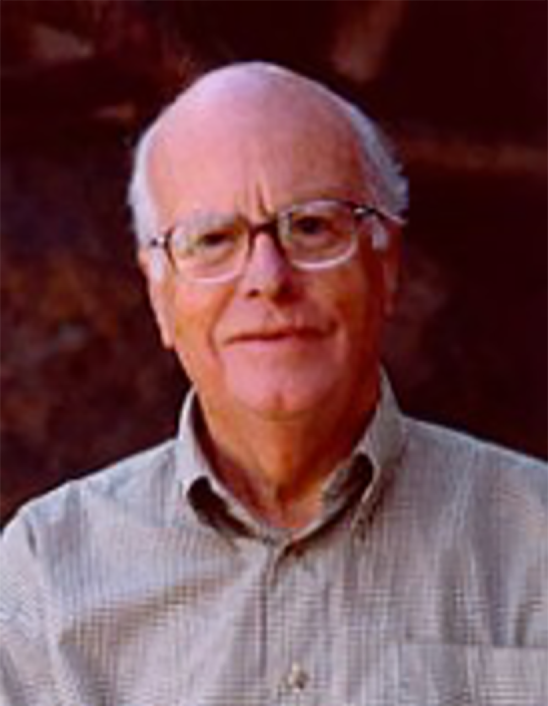
Stewart Turner was born in Sydney, Australia, and after spending periods attending primary schools in London and New York, returned to Sydney in 1939 and had his secondary education at North Sydney Boy's High School, where he matriculated with honours in mathematics. He obtained a University Exhibition in engineering and entered Sydney University in 1948. While there he changed course and went on to complete an honours degree in theoretical physics and an MSc in theoretical nuclear scattering. Following his university education Stewart joined the cloud physics group at the Radiophysics Division of CSIRO. It was here that he first encountered a geophysical flow problem, how ‘warm rain’ forms on salt nuclei, that was to set him on his distinguished career in geophysical fluid dynamics. This topic forms a chapter of Stewart's PhD thesis and I was always impressed that he had to do field work in Hawaii for this and could only observe when it was raining!
In 1954 Stewart won an 1851 Exhibition Overseas Scholarship and he went to Cambridge to join the fluid dynamics group headed by G.I. Taylor and George Batchelor. It was there that Stewart began carrying our small-scale laboratory experiments that became the hallmark of his career. He worked on the dynamics of clouds and wrote, with fellow PhD student Bruce Morton and G.I. Taylor, their famous paper on plumes and the entrainment assumption, which currently has been cited over 1700 times. After completing his PhD, Stewart was a postdoctoral scholar in the Department of Mechanics of Fluids at the University of Manchester, where he worked on the problem of methane layers in coal mines which led to his interest in entrainment in stably stratified flows. He returned to CSIRO in 1960 and in 1961 went to the Woods Hole Oceanographic Institution first as Rossby Fellow and then Associate Scientist. Stewart returned to Cambridge in 1966 as an Assistant Director of Research in the DAMTP, where he became the Director of the Fluid Dynamics Laboratory and in 1973 Reader in Geophysical Fluid Dynamics. He was a Fellow of Darwin College and later an Overseas Fellow of Churchill College.
Stewart married Sheila Lloyd Jones during the second year of his postdoc in Manchester. They had three children, all born on different continents: Bruce (Australia), Sandra (USA) and Ian (Europe) a fact of which Stewart was particularly proud. In 1975 Stewart and his family returned to Australia where he was the Foundation Professor of Geophysical Fluid Dynamics in the new Research School of Earth Sciences at the Australian National University in Canberra. While at ANU Stewart showed that physical processes in the oceans and atmosphere had counterparts in lava and magma and consequently extended the range of geophysical fluid dynamics to the ‘solid’ earth. He remained at ANU for 20 years until his retirement and later as an emeritus professor.
Stewart had a career-long association with the Journal and was an Associate Editor for 20 years from 1975-1995. He co-authored the second paper in volume 1 issue 1 in 1956 on the collision of drops in clouds, and he published his last paper in the Journal almost 50 years later in 2003 on double diffusive plumes. These papers encapsulate subjects to which Stewart made major contributions during his career: convective motions in the atmosphere, and later when he was in Canberra in the ‘solid’ earth, and double diffusion where his imaginative experiments on salt fingers and double diffusive layering opened up this fascinating field and have influenced researchers ever since. He summarised his early research in his influential monograph ‘Buoyancy Effects in Fluids’ published by Cambridge University Press in 1973. For almost 50 years this book has been the key reference for stratified flow and convection, and continues to inspire new research.
Stewart received many honours during his career, notably Fellowships of the UK Institute of Physics in 1969, the Australian Academy of Sciences in 1979, the Australian Institute of Physics in 1980 and the Royal Society in 1982. He was awarded the Australian Academy's Matthew Flinders Medal and Lecture in 1990 and the Centenary Medal in 2001. He also served on many influential committees for the Australian Academy.
I will end on a personal note. Stewart was my PhD supervisor and I soon came to realise what an outstanding mentor he was. He was generous with ideas – he was writing his monograph at the time and said to me ‘if I wasn't writing this book I would work on salt fingers, perhaps you would like to do that’ – and his time. He let his students publish alone making us seem smarter than we were, and he has supported me throughout my career. I was often welcomed into his home and spent happy times with his family in Cambridge and later in Canberra. He was a warm, gentle and modest man as well as a brilliant scientist. I will miss him.





